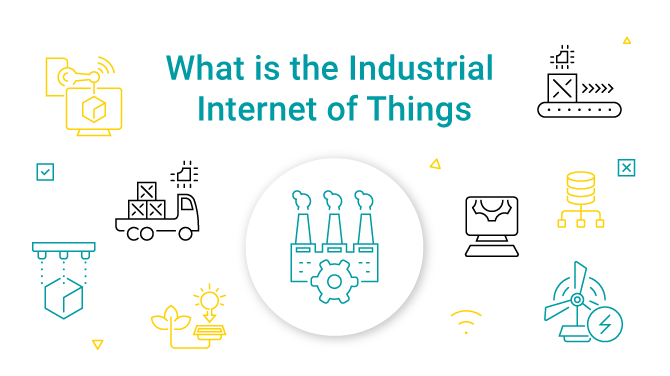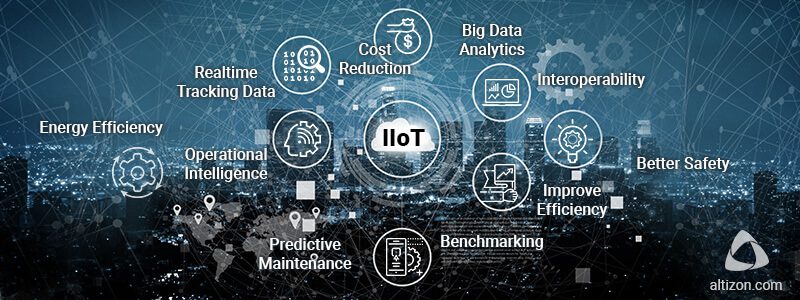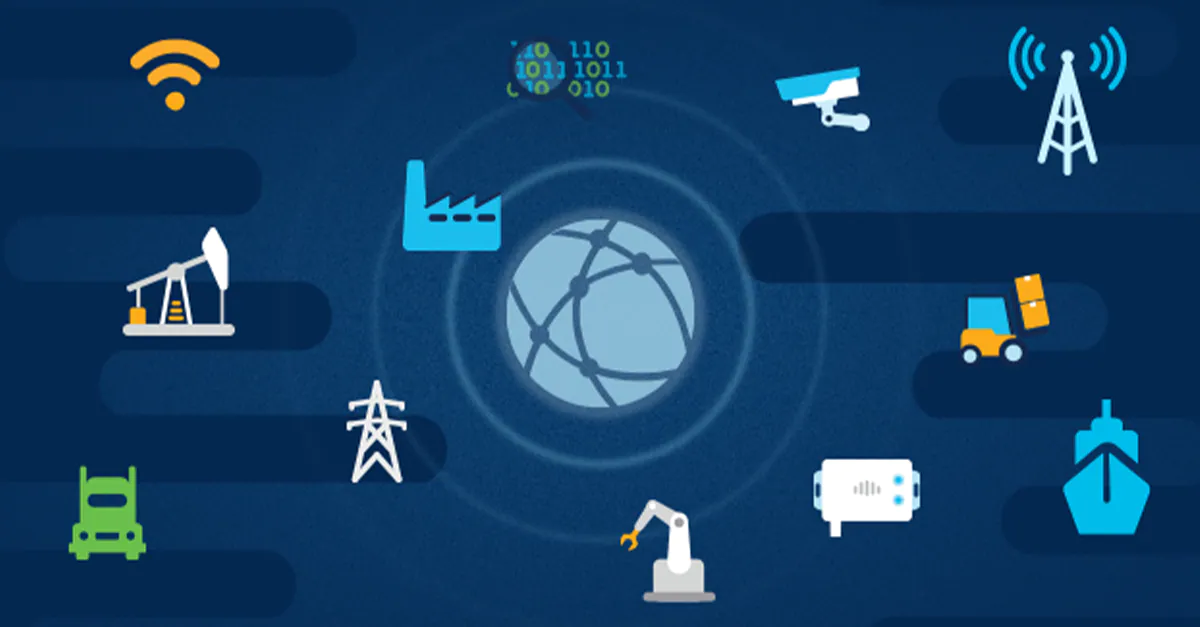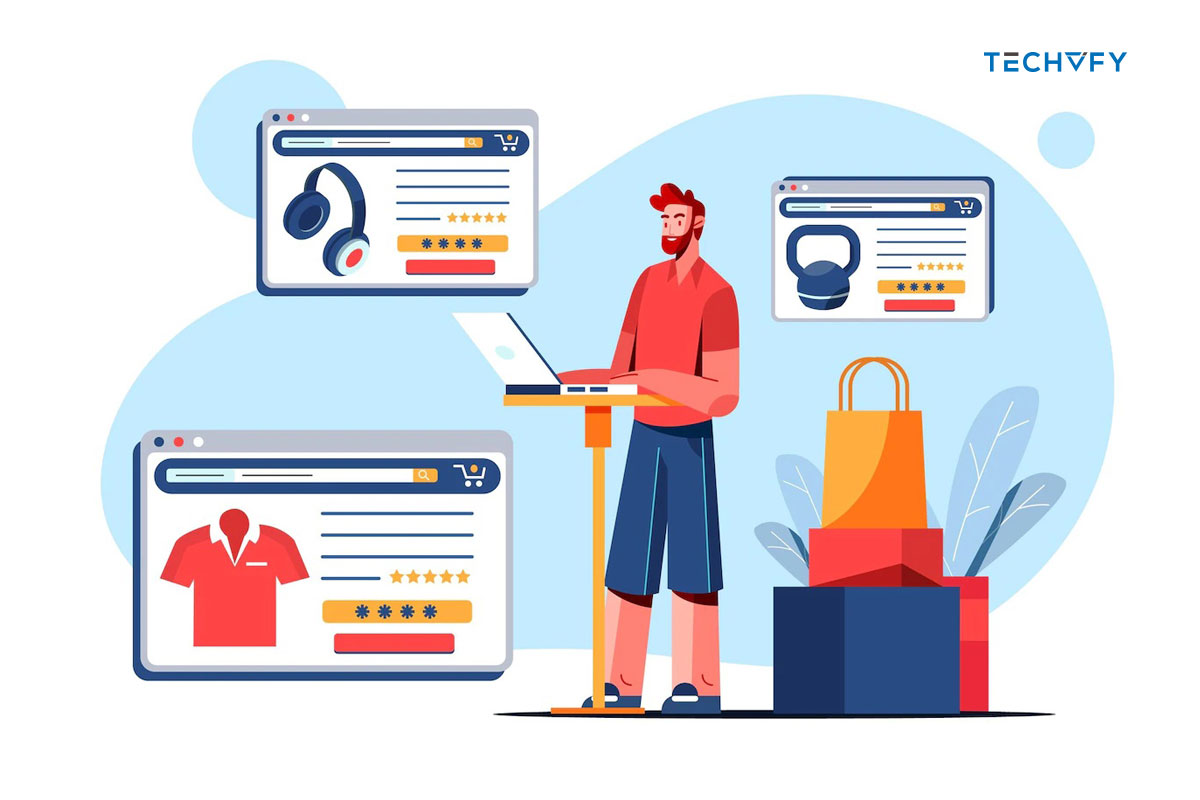Find out What is Industrial IoT solutions
IoT has revolutionized industries, including manufacturing. The IoT market in manufacturing is rapidly growing and is estimated to reach $200.3 billion by 2030. Industrial IoT solutions are the next level of IoT technology, transforming manufacturing operations with various benefits. To stay competitive, manufacturers need to understand and adopt IIoT solutions.
I. What is the industrial Internet of Things?
First, we must understand “what is the industrial Internet of Things?”

The Industrial Internet of Things (IIoT) is all about using the Internet to improve industries. It’s like the Internet of Things (IoT) but for factories and other industrial places. With the IIoT, machines can talk to each other, use big data, and learn from it. This helps industries and businesses be more efficient and dependable. The IIoT is used in various fields like robotics, medical devices, and modern production methods.
1. The Special Things about IIoT
IIoT differs from regular IoT because it combines Information Technology (IT) and Operational Technology (OT). It deals with computers and networks, while OT is about controlling machines in industries. The IIoT helps industries become more automated and organized by bringing IT and OT together. It also lets them see their supply chain and logistics better.
2. IIoT in the Fourth Industrial Revolution
In this revolution, things are changing because of technology. With the help of big data and analytics, IoT allows machines to make quick decisions based on real-time information. It makes machines smarter and more capable of doing tasks that were not possible in the past. The IIoT is also essential for creating smart cities and factories.
Industrial IoT solutions help industries in many ways. It lets them collect and share data between machines and devices. This helps them find and fix problems or inefficiencies in their work immediately. It also makes things run smoothly, saves money, and prevents breakdowns.
3. Empowering Businesses through Connectivity
The Industrial IoT connects different parts of a business. It helps gather lots of data quickly and easily. This allows companies to understand how things are going and make better decisions.
Industrial IoT solutions are a game-changer for industries. It combines technology with industry to make things work better. By using the IIoT, businesses can be smarter, more efficient, and ready for the future. As the IIoT continues to improve, industries can look forward to exciting new possibilities and better ways of doing things.
II. Benefits of the industrial IoT software
So, what can manufacturers expect from today’s industrial IoT solutions? Here are 8 significant benefits of adopting a fully connected IIoT manufacturing operation.

Increased Efficiency
One of the most significant advantages of IIoT is that it helps manufacturers work smarter and faster. Robots and automated machines can do their jobs more efficiently, making production faster and smoother. Sensors connected to machines monitor how they perform so manufacturers know how to make them work even better.
Shorter Time to Market
With industrial IoT software, manufacturers can get their products to market quicker. Innovative technology lets them make decisions faster when the market changes. They can also see what’s happening in the supply chain and fix any problems faster. This means they can improve how long it takes to make products and get them to customers faster.
Reduced Errors
By using IIoT, manufacturers can reduce mistakes in their work. Technology helps get rid of errors caused by people doing things manually. It also makes it less likely to have cybersecurity issues because of human mistakes. With AI and machine learning, the technology can do complex things independently, keeping data safe and secure.
Predictive Maintenance
IIoT helps manufacturers prevent machines from breaking down. By keeping an eye on how machines are doing all the time, manufacturers can spot problems early. They can then fix them before they become big issues. This saves money and keeps production running smoothly.
Improved Safety
IIoT also makes workplaces safer. It helps with safety on the factory floor and in other areas. If there is an accident, the technology can alert everyone and stop work until the issue is fixed. This keeps everyone safe and helps prevent accidents in the future.
Line Optimization
IIoT not only improves single machines but also helps the whole production process. Manufacturers can look at how all their plants work together and determine the best ways to make things. This helps them use resources better and save money.
Digital Twins
Digital twins are like virtual copies of real machines. With IIoT, manufacturers can use these digital twins to test things and find problems without using real machines. It helps them understand how to make things work better and more efficiently.
Reduced Costs
By using IIoT, manufacturers can save money and make more profits. The technology gives them vital information to make better decisions. This helps them spend less money on unexpected problems. They can also keep an eye on their operations from anywhere, which is very helpful.
More IoT blogs at TECHVIFY:
IoT in healthcare: Exploring Definitions, Impacts and Applications
Internet of things – An uprising and promising technology trend
III. Applications and solutions of the industrial IoT
Here are some important examples of the Industrial Internet of Things (IIoT) that can help you save time and money while ensuring top-quality results:

- Quality Control
The Internet of Things (IoT) helps manufacturers monitor their products from start to finish, including raw materials and production. Even after the purchase, IoT sensors continue collecting data, including customer feedback and any issues with the product. Researchers used IoT sensors and AI to find defects in Printed Circuit Boards (PCBs) with 97% accuracy.
- Supply Chain Management
Industrial IoT systems track events in real time throughout the supply chain. Managers can see materials’ locations during shipping and get alerts for unexpected delays. IoT sensors also monitor temperature, humidity, and other conditions of transported goods. Companies like DHL use IoT sensors to ensure the safe transportation of items like COVID-19 vaccines. Combined with AI, IoT optimizes logistics by predicting traffic problems and considering weather conditions for route adjustments.
- Asset Tracking
IoT applications simplify asset tracking in large places like factories and hospitals. Assets like goods and tools can be equipped with unique tags or sensors for easy monitoring. For example, in hospitals, nurses quickly find equipment using IoT tags, saving time and improving efficiency. IoT tags prevent waste in factories by notifying employees about items nearing expiration. Many companies, like Bosch’s Bluehound system, offer IoT tracking solutions, providing detailed asset information. Volvo uses IoT-powered trackers to track vehicles in their truck assembly plants.
Conclusion
Industrial IoT solutions have many exciting applications. It can help decrease downtime and costs caused by equipment failure, automate repetitive and risky tasks for employees and ensure a steady stock supply to prevent delays due to raw material shortages. These are just a few of the benefits it offers.
However, there are challenges when implementing this technology. The main concern with IoT applications in the industry is data security. As more data is collected, processed, and stored, the risk of cyberattacks increases. Another challenge is the costs associated with adopting IoT solutions. When choosing an IIoT vendor, it’s crucial to remember these aspects. We can assist you in adding sensors to your devices, creating a management platform for IoT devices, and developing custom big data analytics solutions that fit your business needs.





